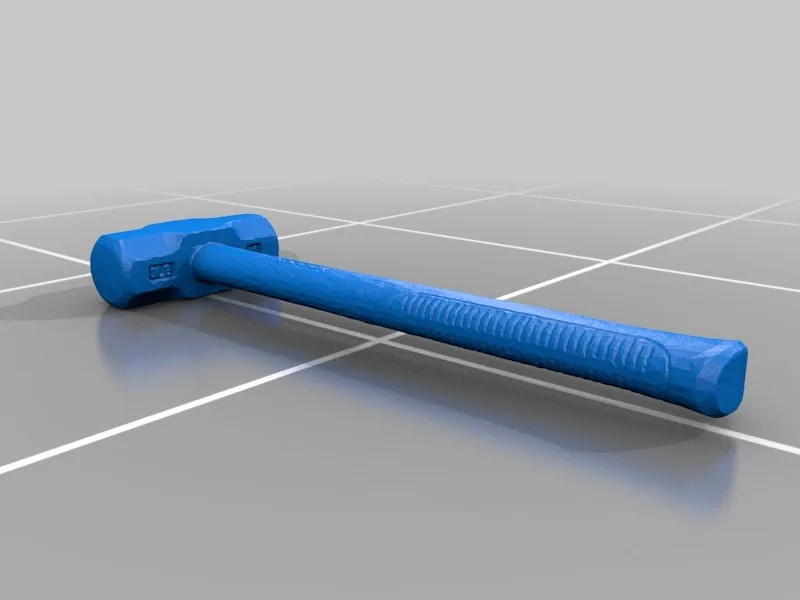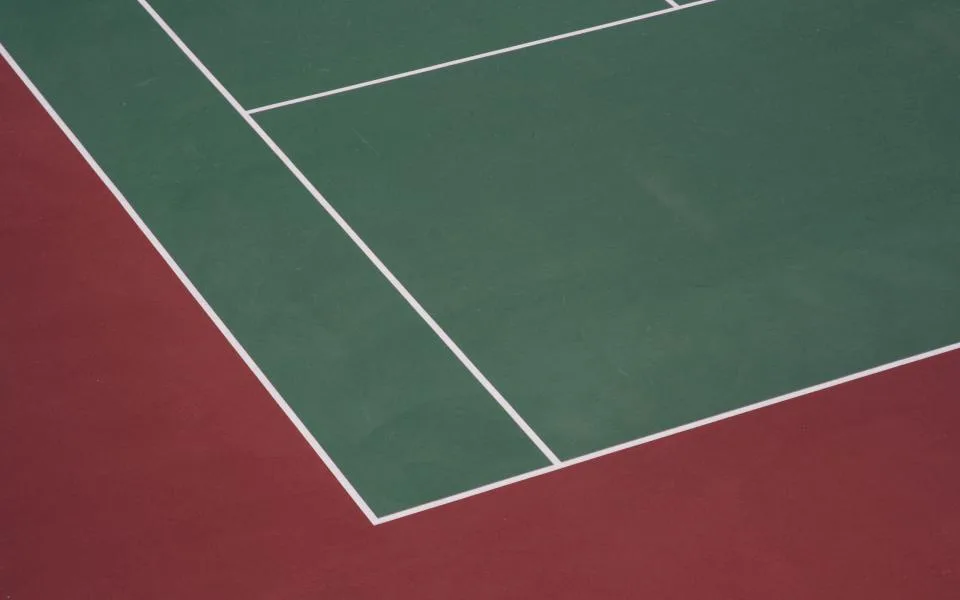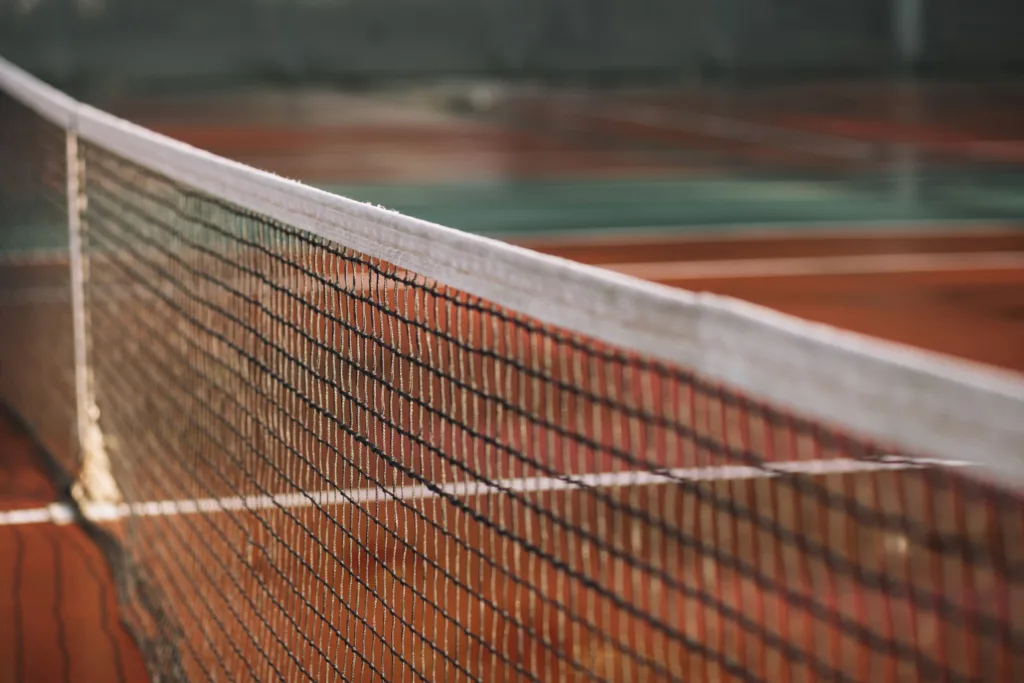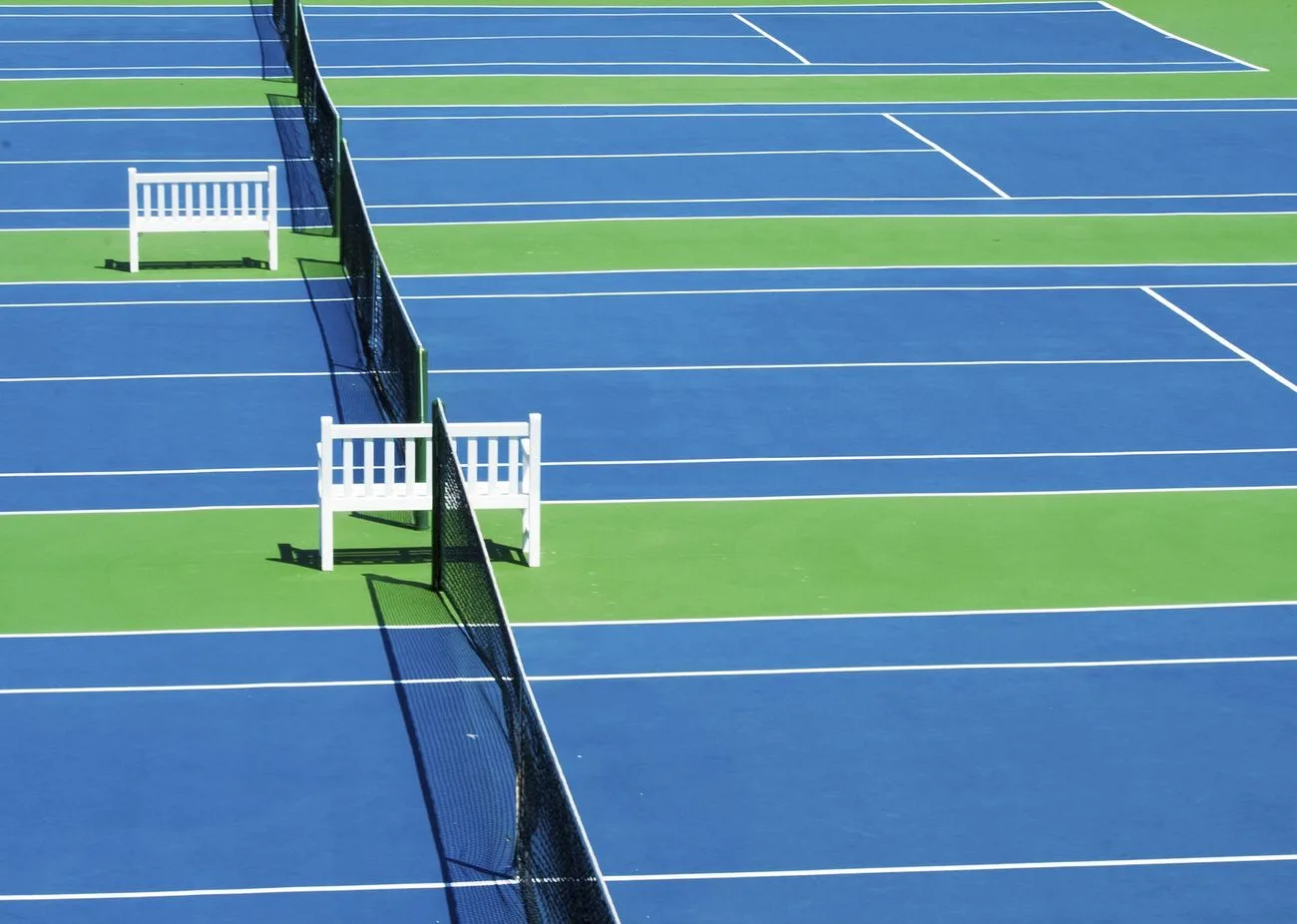Badminton is a well-known sport all around the world. Set up the badminton net appropriately to guarantee a fair and entertaining game, whether you’re playing a casual match or a competitive tournament. This post will teach you how to set up a badminton net step-by-step so you can completely enjoy the game.
Follow this technique to put up a badminton net precisely. This will level the playing field so participants may show off their abilities without restrictions.
A well-set-up badminton net improves game integrity and fairness. It maintains net tension, pole stability, and net height. When these factors are in place, players can concentrate on performance and strategy, making the game more exciting and competitive.
Understanding how to put up a badminton net is vital whether you want to play for leisure or in competitions. This article will help you set up a badminton net correctly so you can enjoy this wonderful sport.
Let’s learn how to put up a badminton net step-by-step so you can play a thrilling game.
Contents
Location Selection:
Setting up a badminton net requires selecting the correct place. To guarantee a safe and fun game, choose a site with enough room. Choosing a location:
Size and Space:
Look for a badminton court-sized space. Singles and doubles courts are 17 and 20 feet wide, respectively. Make sure players may move freely around the court.
Surface:
Choose a level badminton court. Avoid bumps, slopes, and uneven terrain, which may impact gameplay and cause harm. Setting up the net is best on a flat lawn or inside area.
Clearance:
Check overhead clearance. Badminton players hit the shuttlecock upwards, therefore avoiding low-hanging obstructions like tree branches and light fixtures.
Lighting:
If you’re playing inside or at night, consider lighting. Proper lighting lets players see the shuttlecock and react quickly.
Consider the weather. Consider wind, rain, and direct sunshine while playing outside. To preserve game integrity, locate a site with some wind and weather protection.
Accessibility:
Choose a place all players can reach. Consider parking, toilets, and other facilities that may make playing more enjoyable.
These variables might help you choose a badminton net-friendly site. Finding the ideal position can help you and your teammates enjoy badminton.
Gathering Gear:
Next, gather the tools to put up a badminton net. Having everything you need makes setup easy. Required equipment:
Get a regulation-sized badminton net. These nets are 20 feet wide and 2.5 feet at the sides and 5 feet 1 inch in the middle. If you play outdoors, the net should be robust.
The badminton net requires two poles or supports. These poles or stands should be strong and tall enough to support the net. Adjustable poles enable net height customization.
Guy Ropes or Stakes:
These are needed to keep the net from drooping. Outdoor nets are usually secured using guy ropes and stakes. The net’s lower corners will have ropes or posts extending diagonally toward the ground.
Accurate court measurements need a measuring tape. It will let you measure and mark the badminton court to match the standard dimensions for singles or doubles play.
Mallet or Hammer:

A mallet or hammer attaches pegs to the ground, stabilizing the net arrangement. It secures poles and stands throughout the game.
Before commencing the badminton net set up, gather all these goods to save time and ensure you have everything you need. To guarantee a smooth setup and comfortable badminton game, double-check all equipment.
Court Measurements:
A badminton net requires proper court measurements. Properly demarcated court borders assure fairness and rule compliance. Marking court dimensions:
Before measuring the court dimensions, make sure you have a measuring tape or lengthy measuring equipment.
Determine Court Size:
Choose singles or doubles. Singles and doubles courts are 17 and 20 feet wide, respectively. These measurements fit the game format.
Start from the court’s centerline. Mark 22 feet from each court end. This gives the centerline.

Mark the Width:

For singles, measure and mark 8.5 feet from the midline to each side. This is singles court width. Mark each side 10 feet from the centerline for doubles play. This is doubles court width.
After measuring the width on both sides, mark the whole court. Mark the back-to-front court borders using chalk or tape. Straighten and highlight the lines.
Check Court Dimensions:
Double-check your dimensions and marks. Use the measuring tape to check the court width and length meet the criteria for singles or doubles play.
These methods will help you measure and mark the court measurements for a clean badminton playing area. Fair play and clear court markings provide a fun and competitive experience.
Pole Setup:

Installing a badminton net correctly requires a pole setup. The poles support and stabilize the net during play. Setup instructions:
- Start with the poles on either side of the court. Poles should be around 5 feet from the sidelines. Keep them parallel and perpendicular to the net line.
- Set the net height. The middle of a badminton net is 5 feet 1 inch (1.55 meters) while the corners are somewhat lower. Adjust the poles for height. Many poles have height-setting systems or markers.
- Insert the poles into the ground. Playing on grass or soft ground may need you to properly plant the poles. If the ground is firmer, gently tap the poles into place using a mallet or hammer. Make sure the poles don’t tilt or sway.
- Step back and verify alignment after inserting the poles. Check whether the poles are parallel and perpendicular to the net line from the middle of the court. Adjust their places to align them.
- Test Stability: Gently shake the poles. They should stay put. Adjust the poles or use man ropes or weighted bases to stabilize them.
- Verify Net Height: Stand at the center court and verify the net height. The center should be 5 feet 1 inch, with a 1-1.5 inch sag. Adjust the poles for net height and tension.
- Set up your badminton net poles using these procedures. Maintaining the net’s integrity throughout play requires solid poles.
Net Attachment:
Next in badminton net setup is attaching the net to the poles or stands. This secures and positions the net for play. The net may be attached step-by-step:
Unroll the Net:
Spread the badminton net towards the poles or stands. Keep the net untangled and completely stretched.
Net:
Place the net between the poles or supports. The net should be 5 feet 1 inch (1.55 meters) in the center and somewhat lower at the sides.
Attach the Net to the Poles/Stands:
Most badminton nets include hooks or Velcro straps for easy attachment. Start by firmly fastening one net end to a pole or stand. Attach the other end to a pole or stand.
Adjust Net Tension:
After attaching the net to both poles or supports, verify its tension. Stand at the center court and gradually pull the net toward you. The center of the net should drop 1-1.5 inches. This little droop lets the shuttlecock cross the net and assures fair play. To adjust tension, raise or lower the net.
Step back and check the net alignment. It should be straight, parallel to the ground, and untwisted. Adjust the net to fit. To test the net’s stability, gently pull it. It should not move or slide. To stabilize the net, tighten hooks or Velcro straps or modify attachment points.
Following these procedures will fasten the net to the poles or stands for play. A well-attached net makes badminton fair and competitive.
Adjusting Net Height:
Adjusting the net height for badminton is crucial. Step-by-step instructions for adjusting net height:

Before setting the net height, decide whether you’re playing singles or doubles. Both forms have a center net height of 5 feet 1 inch (1.55 meters). The net should droop 1-1.5 inches at the edges. Check the poles or stands for an adjustable mechanism to vary the net height. Sliding mechanisms, adjustable hooks, and height marks are examples.
Adjust the Net Height:
These procedures vary per adjustment mechanism:
Sliding Mechanism:
Unlock your poles or stands’ sliding mechanisms. Adjust the net’s height to match the poles or stands’ measurement marks. Lock the net to secure it at the set height.
Adjustable Hooks or Straps:
If your net is fastened to the poles or stands using adjustable hooks or straps, find and adjust them to the appropriate net height. Adjusting the hooks or straps may raise or lower the net.
Some poles or stands have pre-marked height choices. Find the net height indication and adjust it. Step back and check the net height after adjusting it. It should be straight and parallel to the ground with a 1-1.5-inch center sag. Adjust for tension and sag.
Test the Net Height:
Stand in the middle of the court and use a measuring tape or eye judgment to check the net height. The center of the net should be 5 feet 1 inch and the borders somewhat lower.
Follow these instructions to alter the net height for badminton. The right net height ensures fairness and a level playing ground.
Maintaining Tension:
Fair and pleasant badminton requires sufficient net tension. Step-by-step instructions for net tension:
Check the Initial Tension:
After connecting the net to the poles or stands, stand in the middle of the court and gently pull the net toward you. The centre of the net should droop 1-1.5 inches (2.5-3.8 cm). This sag lets the shuttlecock cross the net for fair play.
If the net is excessively loose or tight, alter the net height. Following the normal singles or doubles measures, elevate or lower the net to the appropriate height.
If available, use the net tension straps. To adjust tension, tighten or loosen these straps. Adjust these straps to change the net’s tension.
If the net is too loose, adjust the pole or stand attachment points. Repositioning hooks or straps increases net tension. If the net is too tight, loosen the attachment points slightly.
After adjusting, carefully check the net. A tiny droop in the centre is OK. To ensure the net is secure and tensioned, gently pull it. The net should not sag.
Fine-Tune the Tension:
Adjust the tension as needed. You may tighten or loosen the net attachments, alter the height, or use bungee cords or ratchets if the net maker provides them.
Following these methods and constantly monitoring the tension will guarantee the badminton net is tight and sags correctly. Tension ensures fair play, precise shots, and fun for all players.
Net security:
Securing the net prevents it from moving throughout the game. Steps to secure the badminton net:
Attach Guy Ropes or Stakes:
If playing outside or in a windy area, secure the net with guy ropes or stakes. Attach a guy rope or stake to one net corner’s bottom corner. Stretch the guy rope diagonally from the net to the ground. Tie the other end of the guy rope to a stake or a tree or post. Repeat for the opposite net’s bottom corner.
Tension:
Pull the guy ropes tight to stabilize the net. Adjust guy rope tension to prevent net drooping and maintain net height and alignment.
Anchor Stakes:
Drive stakes away from the net. Make sure the stakes are deep enough to stay put throughout play.
Test Stability:
Gently shake the net. It should not shift or sag. Adjust guy ropes or stakes to stabilize the net.
Safety:
Position man ropes or stakes to reduce player tripping and injury. Keep them out of the playing area and visible to everyone.
These methods secure the badminton net, limiting movement and creating a solid playing surface. This keeps players focused and improves game safety.
Stability check:
Stability checks verify that the badminton net and its supporting pieces will not move or collapse during the game. Stability may be checked step-by-step:
Start with the net’s poles or stands. Check whether they’re firmly planted or mounted. Keep them steady.

Verify Attachment Points:
Check the net’s pole or stand connections. Securely fasten the attachments. Check the net’s hooks and straps to make sure they’re secure.
Test Pole Stability:
Gently shake or push each pole. The poles should stay stable. To stabilize poles, modify them or use man ropes or weighted bases.
Visually check net tension from the middle of the court. As suggested, the net should droop somewhat in the centre. Check the net’s fit. Follow the procedures above to adjust net tension.
Man Ropes or Stakes:
Check the net’s man ropes or stakes. Check the guy ropes and stakes. Adjust them if they loosen or slide.
Stability Test:
Shake the net system harder to imitate game circumstances. Check the net, poles, and man ropes/stakes for movement. The net should stay in place.
Follow these methods and check for stability to secure your badminton net. Stable net components reduce disturbances and make the game fun for all skill levels.
Net Testing:
Before playing badminton, test the net. Here’s a step-by-step net testing guide:
Visual Inspection:
Check the net for rips, ragged edges, and broken attachments. Make sure the net is undamaged and working well.
Drag Test:
Stand at the center court and gently drag the net to test its stability. The net should not shift or sag. Check the net tension and attachments.
Shuttlecock Test:
Hit a few shuttlecocks over the net to test it. Without loose threads or uneven tension, shuttlecocks should glide over the net. Make sure the net doesn’t deflect shuttlecocks unfairly.
Height verification:
Use a tape measure or estimate the net’s center height. Confirm that the net is 5 feet 1 inch (1.55 meters) in the center and slightly lower at the borders, creating a 1-1.5 inch (2.5-3.8 centimeter) droop.
Stability Check:
Give the net system a stronger shaking or push to imitate game circumstances. Check the net, poles, and attachments for movement. The net should not move or collapse.
Adjustments:
Fix any errors found during testing. Repositioning poles or stands, tightening or loosening attachments, or altering net tension are examples. Before playing, make any required adjustments.
By testing the net, you may find and fix any faults, making it ready for play. A working badminton net improves fairness, safety, and pleasure.
Care and Maintenance:
Maintaining your badminton net is crucial to its longevity. Badminton net care instructions:
Regular Cleaning:

Remove dirt, dust, and debris from the net during play. Wipe the net carefully with a soft cloth or sponge with mild soap and water. Abrasive cleansers and brushes may degrade the net material.
Check for Damage:
Check the net for rips, ragged edges, and loose attachments. Prevent small harm by fixing it right away. To maximize performance, replace a damaged net.
Store properly to avoid mold and moisture development. Disassemble and fold a detachable net to eliminate wrinkles. Protect the net with a storage bag or container. Sunlight degrades net material. Avoid sunbathing with the net. Consider shading structures or tarping the net while playing outside.
Check Attachment Points:
Check the net’s pole/stand attachment points regularly. Check hooks, straps, and other fasteners. Maintain net security by replacing old or broken attachments.
Adjust Tension:
If the net becomes too loose or tight during play, adjust the tension. To alter the tension, adjust the net height, tension straps, or attachment points.
Replace Worn Components:
Net hooks, straps, and tensioning systems wear out over time. Replace these components to maintain net security and functionality.
Follow the manufacturer’s directions for badminton net maintenance and upkeep. Material and design may dictate net needs.
These maintenance and care procedures may improve the lifetime and effectiveness of your badminton net. Regular maintenance increases net durability and makes games safer and more fun.
Safety Tips:
Badminton requires safety procedures to protect players. Important safety measures:
Warm up and stretch before playing to avoid injuries. Stretching reduces strains and sprains. Wear stable, non-slip sports shoes. Playing barefoot or in non-sports shoes increases the chance of falls.
Clear Playing Area:
Remove barriers, trash, and dangers to prevent tripping and collisions. Remove sharp objects and risks.
Proper Lighting:
If playing inside, make sure the playing area is well-lit to avoid collisions and shot misjudgments. In low-light settings, use well-lit courts or supplementary illumination.
To avoid striking other players or objects, regulate your swings and shots. Take shots dependent on space and other players.
Communication:
Communicate with teammates to avert accidents. Call for the shuttlecock using vocal commands.
Hydration:
Drink water often throughout the game. Hydration prevents weariness and optimizes performance.
Breaks:
Rest and recuperate between strenuous gaming periods. Overexertion may impair coordination and increase injury risk.
Equipment Safety:
Check the badminton racket for damage and wear. Replace worn grips to avoid accidents. Use shuttlecocks suited for the level of play to avoid speed or force injuries.
Respectful Conduct:
Play fair and respect other players. Avoid dangerous or unsportsmanlike actions. First Aid and Emergency Preparedness: Keep a basic first aid kit handy for minor injuries. Learn first aid. Know the emergency exits and medical aid numbers. By taking these steps, you may reduce the chance of injuries and make badminton a safe game. Safety improves badminton pleasure and durability.
Game Strategies:
Consider these badminton strategies for success:
Regular practice improves performance. Practice your shots, footwork, and game strategy in dedicated sessions.
Focus on Footwork:
Badminton requires fast and effective footwork. Practice split steps, lateral movements, and smooth shot transitions.
Master the Basics:
Learn the clear, drop shot, smash, and net shot to build your badminton foundation. Prioritize technique and control over more complicated shots.
Game Strategy:
Learn about aggressive, defensive, and mixed game tactics. Play to your opponent’s strengths and weaknesses.
Communication and collaboration:
Playing doubles requires good communication and collaboration. To improve your team’s performance, communicate, coordinate, and cover the court. Watch your opponent’s movements, shot patterns, and body language. To win, anticipate their shots and discern their intents.
Maintain Consistency:
Consistent shots and placement gain points. Control and precision, not power, are key. Consistency frustrates opponents and creates winning shots. Badminton requires mental toughness. Stay optimistic and resilient throughout the game. To keep your mental game strong, learn how to overcome errors.
Watch professional badminton matches to learn from top players’ plans, skills, and match play. To improve, study their movements, shot selection, and location.
Have Fun:
Enjoy badminton. Enjoy competition but also teamwork and sportsmanship. Positive thinking makes badminton fun. These suggestions will improve your gaming, abilities, and pleasure. Whether playing casually or competitively, improving and using smart methods can help you win badminton.
Frequently Asked Questions:
Q: What is the usual badminton net height?
A: Badminton nets are 5 feet 1 inch (1.55 meters) tall in the middle and somewhat lower at the perimeter.
Q: Can badminton use any shuttlecock?
A: Professionals should use feather shuttlecocks, while recreational players should use plastic ones.
Q: How many people play doubles badminton?
A: Two teams of two players play doubles badminton. The court has four players.
Q: Badminton’s serving area serves what?
A: The serve must be delivered from the court’s serving area. It guarantees the serve is made from a certain place and respects the regulations.
Q: Is badminton strenuous?
A: Badminton requires speed, agility, and endurance. It boosts reflexes and cardio.
Conclusion:
A fair and fun badminton game requires adequate net setup. This article’s step-by-step instruction makes setting up a badminton net easy. Safety, net maintenance, and consistent practice will improve your badminton abilities. Enjoy badminton with friends and family!


1 thought on “How to Set Up a Badminton Net: A Foolproof Step-by-Step Manual”